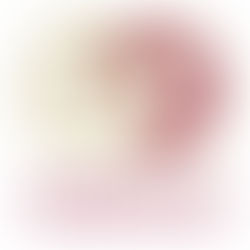A update on some marquettes
Looking at my blogs I notice that it's some time since I've written about the actual clay work I've been doing. This is not due to inactivity in the studio but at my desk at home.
So, this is what I've been up to:
Black Clay Marquettes:


I applied wax resist where I wanted the black clay to stay unglazed before brushing on a fake celadon glaze. I also wanted to try out firing this in a little stilt to prevent it from sticking to the kiln shelf. Next fired in oxidation to ca 1260°c.
Result: Piece stuck to the stilt, which left little crater. Not really that good. Neither is the glazing. I shouldn't brush on this glaze as it either is too thin and has no colour or it is too thick and turns opaque. This marquette is a bit: this is not how do it.

I covered the whole figure with a white slip before applying the pattern in shellac and then wiping away the white colour where left unexposed. They it went into bisque firing.

The shellac burns off and leaves the white pattern on black. Unfortunately some of white decoration popped off where the slip must have been to thick. Nor really sure where to go from here?

Well, I've added some black design liner details. Not sure whether this is right either. I actually preferred it with the golden shellac and white outlines. Hm, need to put this aside and maybe I'll come up with something later...


I kept the decorating process fairly simple on this marquette: just shellac resist and bisque fired trying out an Iznik inspired pattern.

After just refiring it in an electric kiln to 1260°c I am totally pleased with the outcome. The colour of the clay has darkened considerably and the white molochite particles really show up very nicely and emphasise the pattern. Yeah - I'll definitely develop this further!
White Clay Marquettes:
So once the white clay marquettes came out of bisque firing I decided to use design liners to decorate them and to see how I can apply the Iznik inspired patterns to organic forms.


For this marquette I used watered down black/blue underglaze to map out fields of colour which I decorated with design liners in black, blue and bright blue. Some of the patterns are carried across the different fields to link them via the designs and encourage a visual flow.


Somehow, I lost the Iznik pattern when using just the black design liner on this bisque fired piece. It looks more Pueblo inspired. This may actually be due to the choice of colour which is not seen in Iznik design.

In both cases I have used wax resist to mask the white undecorated areas. However, I have also masked the stripy areas on the b&w marquette to see how it will fare without glaze.

I am glazing both marquette with different glazes and will fire them in different firings to be able to compare how this clay (ES40) comes out:
left: with a celadon glaze in reduction
right: with clear shiny glaze in oxidation


Reduction fired result: clay body is quite grey, where glaze is a bit too thick it goes opaque, this celadon is very muted in colour.


Oxidation fired result: clay body is a not unpleasant off white, no bubbles or cracks in the glaze and it has a real thick and shiny lush feel to it which contrast very nicely against the matt unglazed clay body.
This is a success and after showing it to Dave he suggested I repeat this on a larger scale piece - keeping the pattern small scale. Thanks! but I agree.
This is the final result of the third marquette in this pairing made from the same clay, with black design liner underglaze but decorated with a different celadon glaze and fired in reduction to ca 1270°c. Fired result: clay body same grey, the glaze is a bit greener but I still would prefer more but it works quite well with the density of the black decorations.


Well, this was fun and educational. Now on to the next set of marquettes....

















